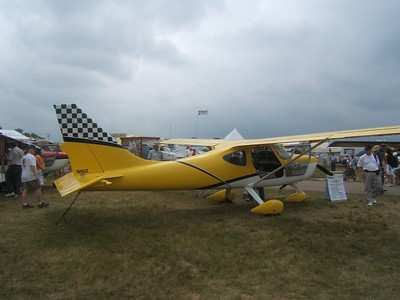Sat, Nov 09, 2013
Airplane Struck Power Lines While On A Positioning Flight Under IFR Conditions
The NTSB has posted its preliminary report from an accident which occurred late last month in Colorado that resulted in the serious injury to the pilot of a Glasair Sportsman GS-2.

According to the report, on October 28, 2013, about 1900 mountain daylight time, the airplane impacted terrain after contact with a utility wire near Castle Rock, Colorado. The commercial pilot sustained serious injuries and the aircraft was substantially damaged. The aircraft was registered to and operated by a private company under the provisions of 14 Code of Federal Regulations Part 91 as a positioning flight. Instrument meteorological conditions prevailed for the flight, which operated on an instrument flight rules flight plan. The flight originated from Yampa Valley Airport (KHDN), Hayden, Colorado at 1743, and Front Range Airport (KFTG), Denver, Colorado was the intended destination.
According to the FAA, the flight was in radio and radar contact with Denver TRACON assisting the pilot through weather into Centennial Airport (KAPA). The airplane was last seen at 6,800 feet mean sea level before radar and radio contact was lost. No distress calls or further communications were received from the accident airplane.
The main wreckage contained all primary structural components and flight control surfaces. Flight control continuity was confirmed from the flight control surfaces to their respective cockpit controls. An engine examination indicated no anomalies with the engine and signatures consistent with propeller rotation at the time of impact were observed.
At 1853, the KAPA automated surface reporting system reported the following weather conditions: wind from 110 degrees true at 6 knots, visibility 2 miles in mist, ceiling overcast at 400 feet above ground level, temperature and dew point -1 degree Celsius, altimeter 30.03 inches of mercury. There were reports of freezing precipitation in the immediate area prior to and after the accident.
(Image from file. Not accident airplane)
More News
Aero Linx: The International Civil Aviation Organization (ICAO) The International Civil Aviation Organization (ICAO) is a United Nations agency which helps 193 countries to coopera>[...]
About 25 Days (9.3 Hours) Before The Accident, The Airframe Was Modified With Different Landing Gear Legs, Wheels, And Brakes Analysis: The pilot reported that during the landing r>[...]
Dave Juwel's Aviation Marketing Stories ITBOA BNITBOB ... what does that mean? It's not gibberish, it's a lengthy acronym for "In The Business Of Aviation ... But Not In The Busine>[...]
“Over 2025, Vertical has shown that when we set targets, we deliver. Whilst maintaining our industry-leading capital efficiency, we are not only demonstrating all piloted fli>[...]
Aero Linx: Air Medical Physician Association (AMPA) The Air Medical Physician Association (AMPA) is the largest professional organization of physicians dedicated to rotor wing (hel>[...]
 ANN's Daily Aero-Linx (11.06.25)
ANN's Daily Aero-Linx (11.06.25) NTSB Final Report: Champion 7GC
NTSB Final Report: Champion 7GC Aero-FAQ: Dave Juwel's Aviation Marketing Stories -- ITBOA BNITBOB
Aero-FAQ: Dave Juwel's Aviation Marketing Stories -- ITBOA BNITBOB Aero-News: Quote of the Day (11.06.25)
Aero-News: Quote of the Day (11.06.25) ANN's Daily Aero-Linx (11.06.25)
ANN's Daily Aero-Linx (11.06.25)



